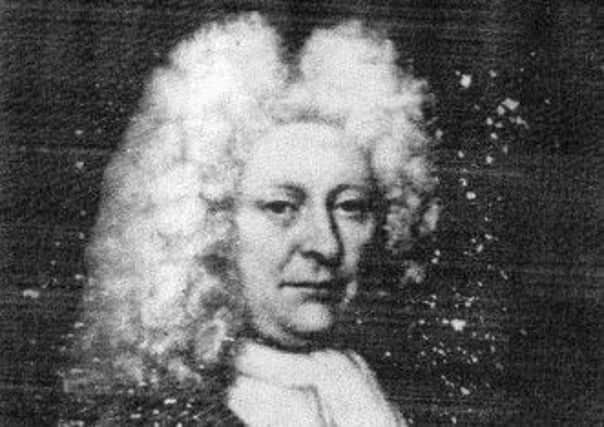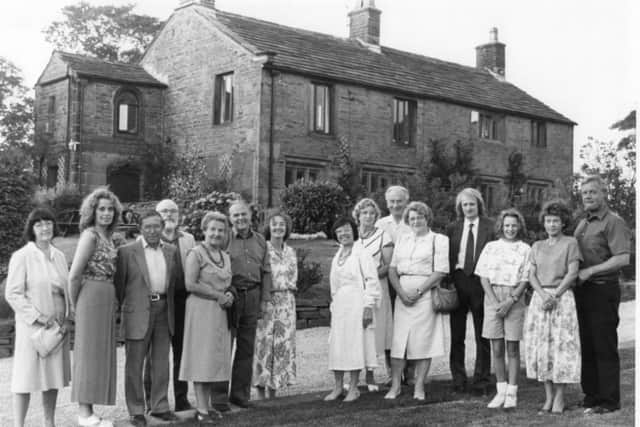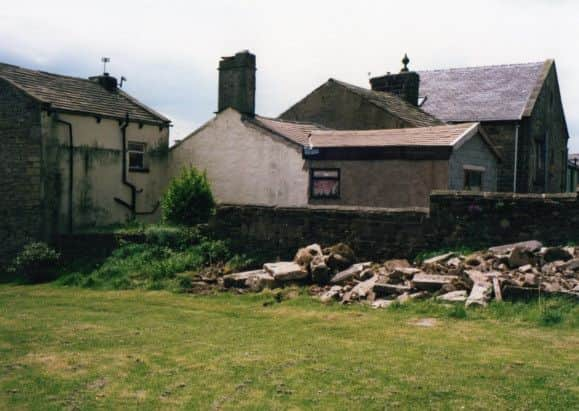Medical help for poor in 18th Century


Reference has already been made to the workhouse in Haggate, the aid given to children of the poor to find work and the provision of the necessities of life for both inmates at the workhouse and those who received relief in their own homes.
A reference in the accounts, which should be more widely known than they are, surprised me. It indicates a quart of ale had been bought for “Sharp, he being sick”. This was in May, 1754, and the trifling sum of 3d was spent. A similar sum was also allocated to “Sharp” very soon after. In June 1755 “Charles’s wife” was given 2d worth of “wine and spirit”.
Advertisement
Hide AdAdvertisement
Hide AdFor some reason, when I came across these records, I did not expect to find reference to the overseer using the poor rates on the health of less well-off members of the community. Logically, I should not have been surprised. If the overseer was prepared to help with food, rent, heating and furniture he would surely have provided for medical assistance when it was needed.


The provision of alcohol was one thing but the records had one more surprise: Briercliffe had its own doctor! Remember, we are in the middle of the 18th Century, before industrialisation reached our area. Briercliffe was an area of scattered farms and small cottages with only one small village, Haggate, which was the location of the tiny workhouse. There was no residential landed family in Briercliffe or Extwistle. In fact the Briercliffe family itself was bankrupt, the head of the family in Lancaster Castle for debt, and it was about this time they sold their small estate to the Robertshaws.
There were a few relatively prosperous families, the Halsteads, Smiths and Ecroyds and it was from the latter that the doctor came. He was Dr John Ecroyd (1679-1755) but little is known about him. One researcher says he practised “physic with good success and great reputation”.
He was son of another John Ecroyd, the first of his family to join the Society of Friends, otherwise known as the Quakers. The other son, Richard, who lived at Lane House, Briercliffe, for a time, was responsible for running the family woollen business at Edge End in what was then Little Marsden (now Brierfield). Some of the cottages associated with this business have survived, as has, from a later period, the great mill at Lomeshaye in what was then Great Marsden (now Nelson).
Advertisement
Hide AdAdvertisement
Hide AdThe Ecroyds had come to Briercliffe in the 16th Century from the Hebden Bridge area when they bought the small Foulds Estate. As with many small farmers, they became involved in the woollen industry which they ran, initially, from Foulds House. The present property, replacing an ancient timber dwelling, was built by the family on a substantial scale, at the end of the 16th Century, so they must have become successful in their commercial activities fairly quickly.


As the elder son, Dr John Ecroyd inherited Foulds House, and the land attached to it, but neither he nor his children could be described as farmers. John, his eldest son, became an apothecary in Kendal; Richard, the second son, was trained as a doctor and emigrated to the West Indies, and Stephen, the youngest, inherited Foulds House and could be described as a “gentleman farmer”. The portraitist Sir Godfrey Kneller (1643-1723) painted a likeness of Dr John.
What, then, did Dr Ecroyd undertake on behalf of the Overseer of the Poor in Briercliffe? The first reference we have occurs in May, 1754. It says, “Paid to Ecroyd for Doctoring Charles Greenwood’s wife, 2s 0d”. In March, 1755 another entry reads, “Paid to Ecroyd for Doctoring Henry Nuttall, six pence”.
It is likely Dr John was responsible for prescribing a man called Sharp, already mentioned in connection with being granted ale, a calves heart for “being sick”. It was generally held that a calves heart was full of strength-giving goodness and such treatment, at this time was pretty common. In fact I recall similar attitudes among some of my relations when I was a boy.
Advertisement
Hide AdAdvertisement
Hide AdA purge was anther popular treatment – though not, perhaps, with the patient as it involved the administering of a purgative to cause the bowels to be evacuated. The wife of Charles Greenwood was given two purges!
It is not clear that Dr Ecroyd attended on women in confinement, but the Overseer had to foot the bill for Elizabeth Nutter’s “lying-in”. Altogether the confinement cost £1 9s 4d of which 20 shillings was for her “lying in”, and 9s 4d was for “fourteen weeks pay; that is from 26th September, 1754 to 2nd January, 1755”. It is possible this latter sum was to pay for the services of what we would now call a midwife.
Though they might be brief, the medical references in the Overseer of the Poor’s Accounts are very revealing. By the time they are made, Dr John Ecroyd was an elderly man. In fact he died in 1755, the year the records end, but they give us an insight into treatment of the poor.
Another point to make is that virtually the whole of the cost of the maintenance of the workhouse, and the other items of expenditure we have mentioned, not only today, but in the foregoing articles, was met by the rate payers of Briercliffe. The County authorities were hardly involved and there were no grants from the Government in London.
Advertisement
Hide AdAdvertisement
Hide AdThough we have only got records for the years 1754-5, the system described over the past few articles continued until the 1830s. In those 80 years Burnley was transformed, by the Industrial Revolution, into something like the town we now know although there was a further 80 years of growth to follow.
The main change that took place was the growth of a wage-earning population divorced from the land. In bad economic times such people were very vulnerable and this can be seen particularly in the years that immediately followed the conclusion of the Napoleonic Wars and in the 1820s when reform of the Poor Law was raised again.
Those who demanded reform were not the poor but those who paid the poor rates. They argued that the poor rates were too much of a burden to bear and the poor ought to fend for themselves. They also indicated the poor would never escape poverty if society paid their bills; something you might think is pretty current at the present time.
The result was the 1834 Poor Law (Amendment) Act, one of the nastiest pieces of legislation Parliament has ever enacted. Surprisingly, it was made law in the middle of the so-called Reform Era, the time when the Great Reform Act of 1832, the Great Factory Act of 1833 and the Municipal Corporations Act of 1835, all pieces of progressive legislation, were passed.
Advertisement
Hide AdAdvertisement
Hide AdI will describe the effects of the 1834 Act as they impacted on Burnley in a future article. It was not very pleasant but I should round off my comments about the pre-1834 system before I consider the Act.
The Townships that made up the Chapelry of Burnley continued with their workhouses and the activities of their individual Overseers. We know Burnley, Briercliffe, Simonstone and Padiham, and Habergham Eaves had workhouses and it is likely other larger Townships had similar facilities. For the smaller Townships, like Ightenhill, it is likely arrangements were made with neighbouring authorities to meet the demands of the Old Poor Law.
Another thing to bear in mind is that the work of the numerous local charities continued. We know quite a bit about these activities from the local newspapers, particularly the “Blackburn Mail”, founded in 1792.
Burnley did not have its own newspaper until the late 1840s but the “Blackburn Mail” contains an immense amount of news about our town and the area around. When, for example, there was great poverty and unemployment among the handloom weavers of the whole area in the mid 1820s, the “Mail” not only tells us about the extent of this poverty, it also outlines what was being done to alleviate it.
Advertisement
Hide AdAdvertisement
Hide AdIt is a story of public subscriptions, of soup kitchens, of pies without meat in them and of starving people digging up the carcasses of dead animals for food, an example of that happening in Burnley. But, despite the hardships, society did pull together and, though there were casualties, people got through the bad times.